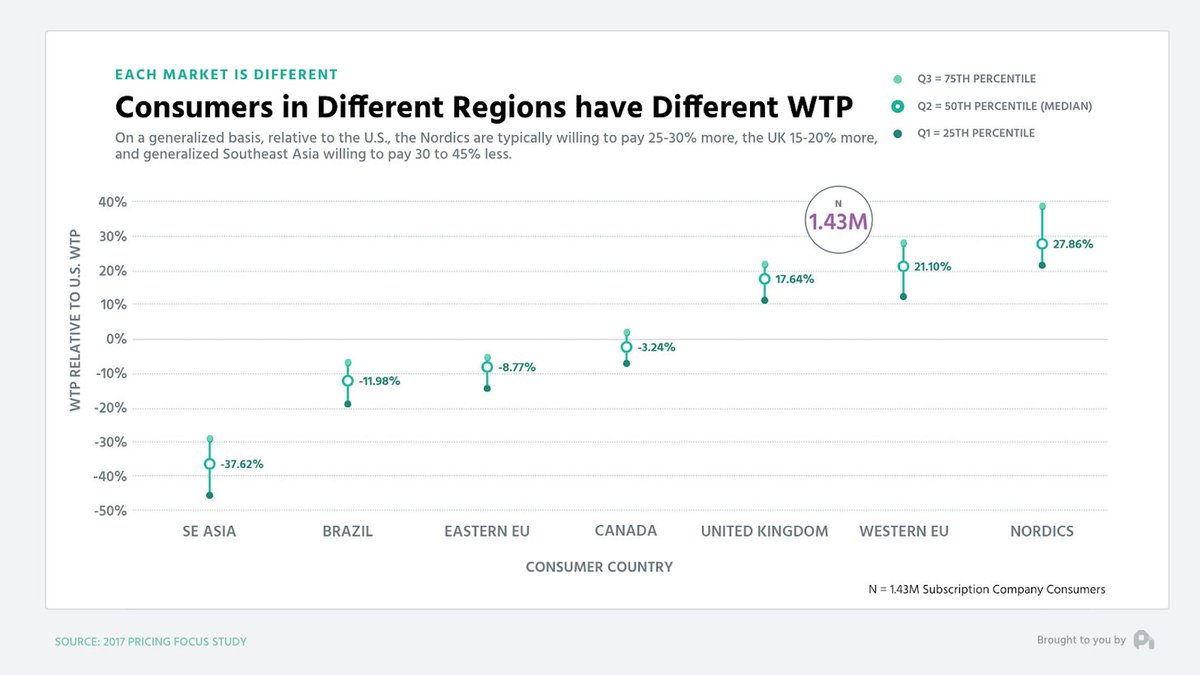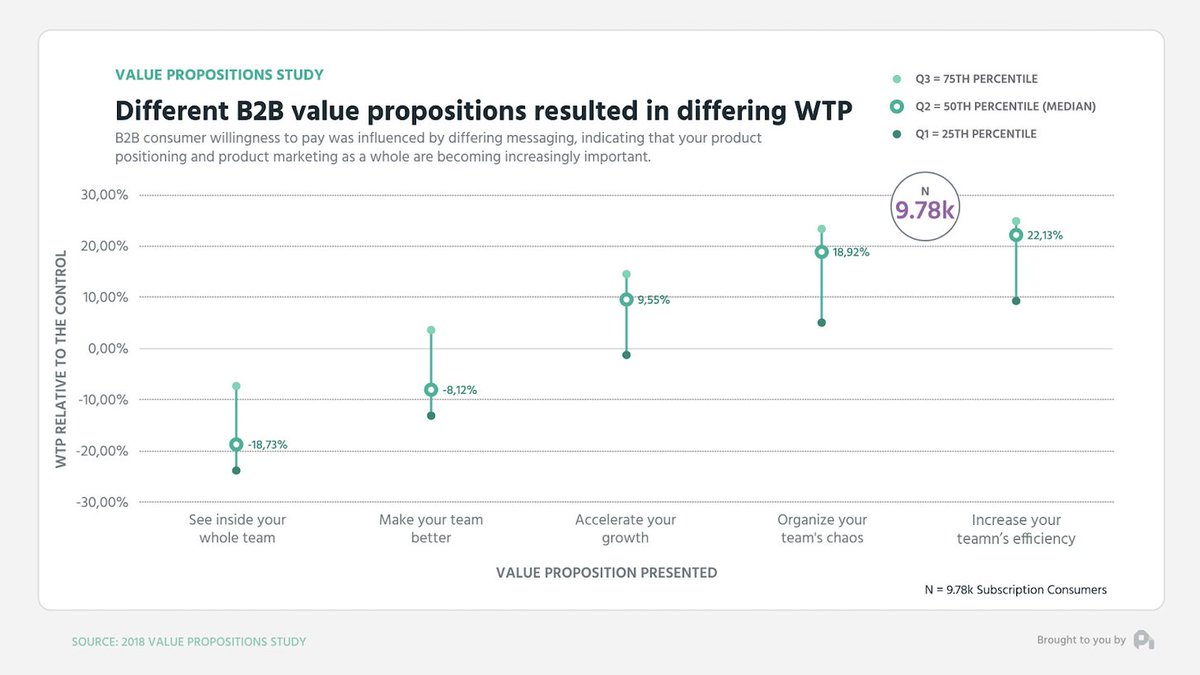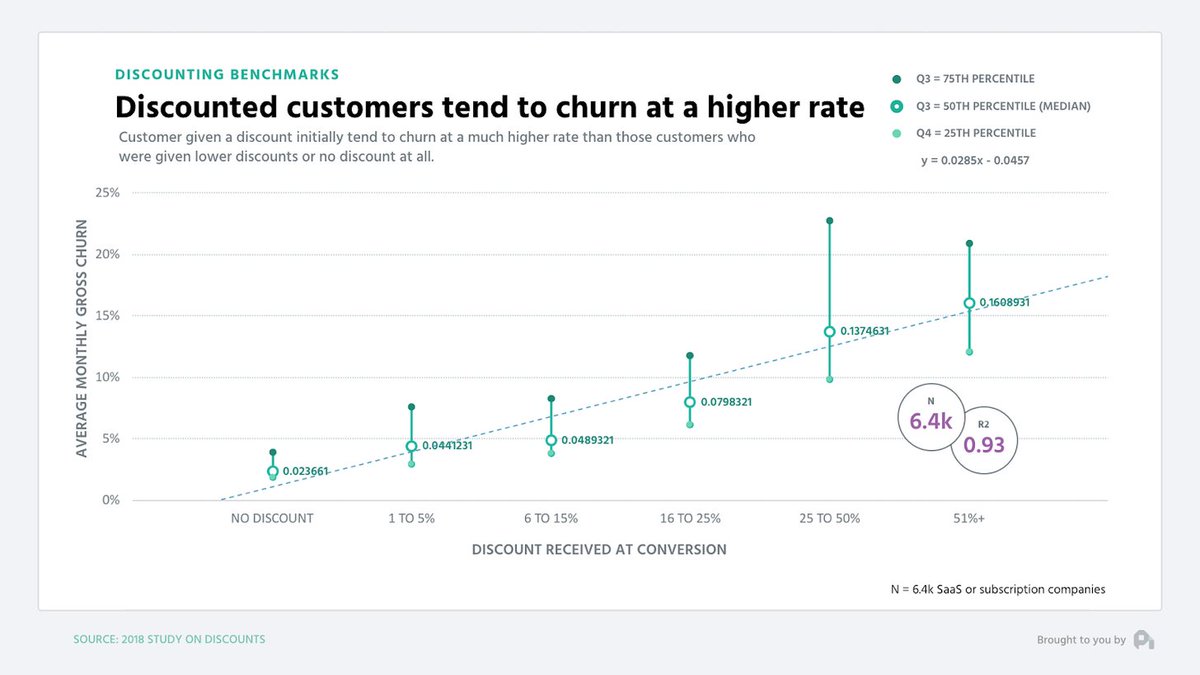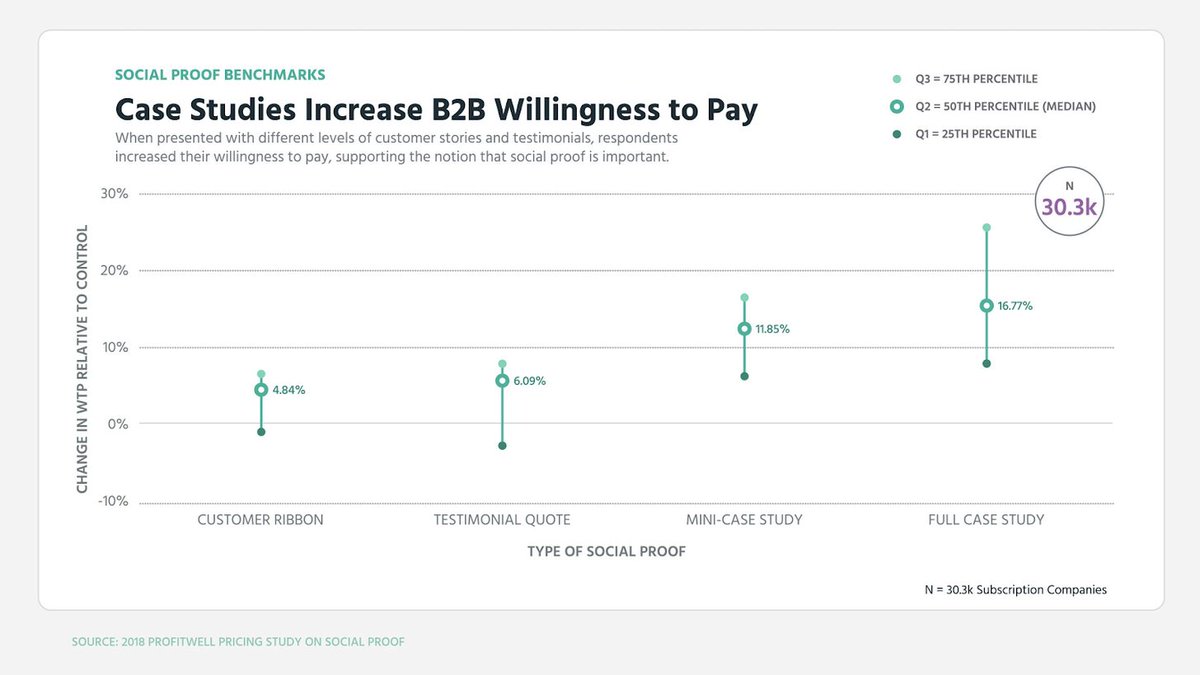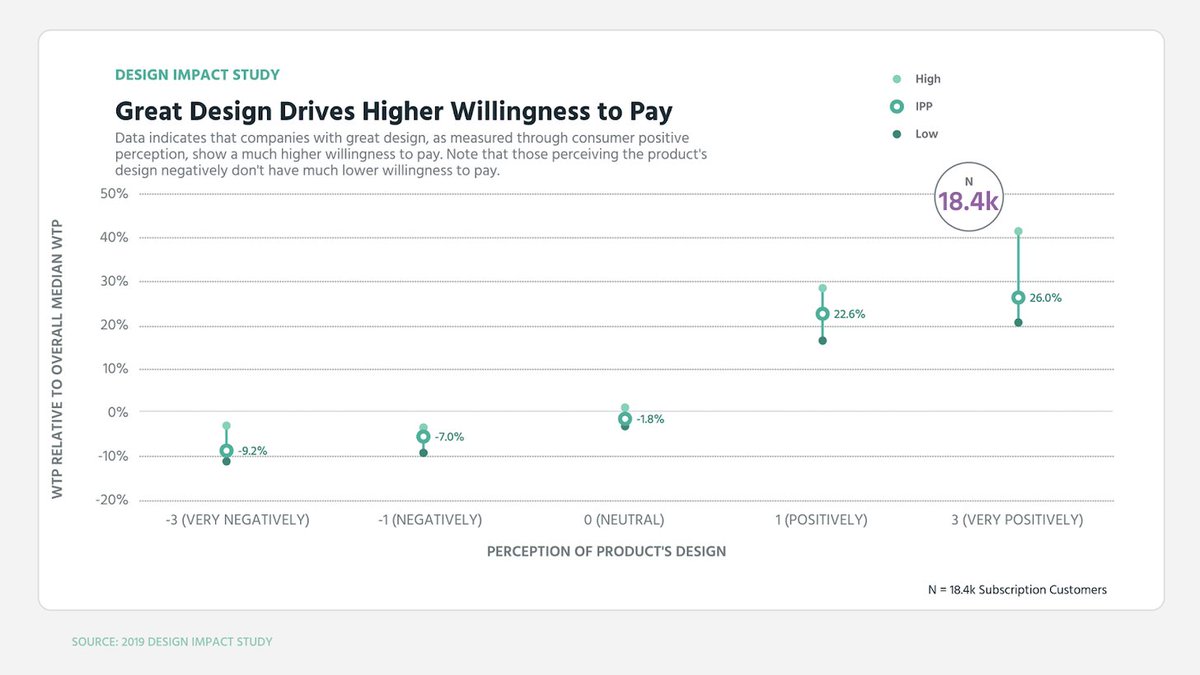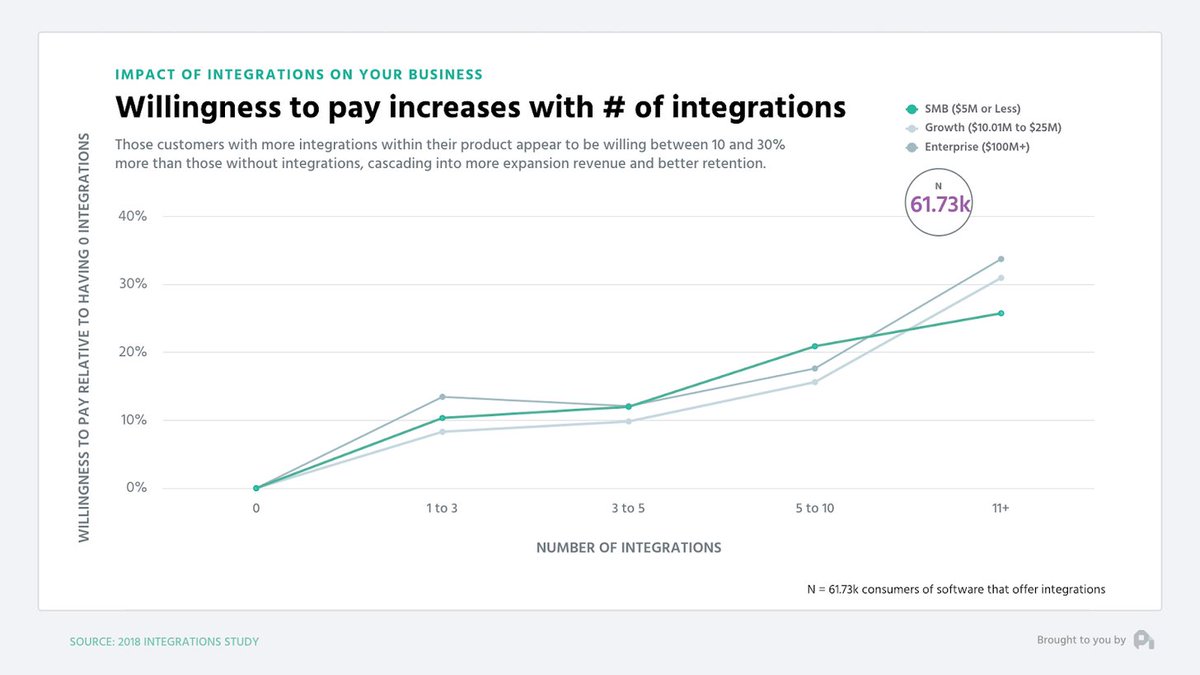10 nuggets of wisdom about pricing strategy pulled from @Patticus's epic guest post last week, including how much to discount, when to consider freemium, the impact of design on price, whether to end your price with a 9 vs. 0, value props, and much more
Read on
Read on

1/ You should localize your pricing to the currency and willingness to pay of the prospect's region
 Revenue per customer is 30% higher when you just use the proper currency symbol
Revenue per customer is 30% higher when you just use the proper currency symbol
 Having different price points in different regions increases revenue per customer further
Having different price points in different regions increases revenue per customer further
 Revenue per customer is 30% higher when you just use the proper currency symbol
Revenue per customer is 30% higher when you just use the proper currency symbol Having different price points in different regions increases revenue per customer further
Having different price points in different regions increases revenue per customer further
2/ Freemium is an acquisition model, not a part of pricing
 Think of freemium as a premium ebook driving leads, not another pricing tier
Think of freemium as a premium ebook driving leads, not another pricing tier
 Don't do freemium until you truly understand how to convert leads to customers
Don't do freemium until you truly understand how to convert leads to customers
 Paid users who convert from free tend to be better
Paid users who convert from free tend to be better
 Think of freemium as a premium ebook driving leads, not another pricing tier
Think of freemium as a premium ebook driving leads, not another pricing tier Don't do freemium until you truly understand how to convert leads to customers
Don't do freemium until you truly understand how to convert leads to customers Paid users who convert from free tend to be better
Paid users who convert from free tend to be better
3/ Value propositions matter oh so much
In B2B value propositions can swing willingness to pay ±20%, in DTC it's ±15%
In B2B value propositions can swing willingness to pay ±20%, in DTC it's ±15%
4/ Don't discount over 20%
In some verticals discounting over 20% may be fine, but you're likely not in one of them, and the size of the discount almost perfectly correlates with higher churn. Large discounts get people to convert, but they don't stick around.
In some verticals discounting over 20% may be fine, but you're likely not in one of them, and the size of the discount almost perfectly correlates with higher churn. Large discounts get people to convert, but they don't stick around.
5/ For upgrades to annual discounts don't use percentages and try offers
Percentages don't work as well as whole dollar amounts for discounts (ie. "1 month" will work better than "X percent off"). Annuals see much lower churn rates.
Percentages don't work as well as whole dollar amounts for discounts (ie. "1 month" will work better than "X percent off"). Annuals see much lower churn rates.
6/ Should you end your price in 9s or 0s? Depends on price point
Ending your prices in 9s evokes a discount brand. Ending in 0 evokes luxury or premium. We have seen it increase conversion in lower-priced products, but retention isn't as good with those customers.
Ending your prices in 9s evokes a discount brand. Ending in 0 evokes luxury or premium. We have seen it increase conversion in lower-priced products, but retention isn't as good with those customers.
7/ You should experiment with your pricing in some manner every quarter
This doesn't mean change the price point each quarter but experiment with something. More changes correlate with increasing revenue per customer. Like all things, focusing on something makes you improve it.
This doesn't mean change the price point each quarter but experiment with something. More changes correlate with increasing revenue per customer. Like all things, focusing on something makes you improve it.
8/ Case studies boost willingness to pay quite a bit
Social proof is important. Case studies can boost willingness to pay by 10-15% in both B2B and in DTC
Social proof is important. Case studies can boost willingness to pay by 10-15% in both B2B and in DTC
9/ Design helps boost willingness to pay by 20%
This graph didn't look this way 10 years ago when design didn't do much for willingness to pay. Today, affinity for a company's design can boost willingness to pay considerably.
This graph didn't look this way 10 years ago when design didn't do much for willingness to pay. Today, affinity for a company's design can boost willingness to pay considerably.
10/ Integrations boost retention and willingness to pay
The more integrations a customer is using, the higher their willingness to pay, and the better their retention. Use this as a tool to get people hooked in and paying more or buying different add-ons.
The more integrations a customer is using, the higher their willingness to pay, and the better their retention. Use this as a tool to get people hooked in and paying more or buying different add-ons.
11/ All of this wisdom courtesy of @Patticus 
Much more in the full post https://www.lennyrachitsky.com/p/saas-pricing-strategy

Much more in the full post https://www.lennyrachitsky.com/p/saas-pricing-strategy

 Read on Twitter
Read on Twitter